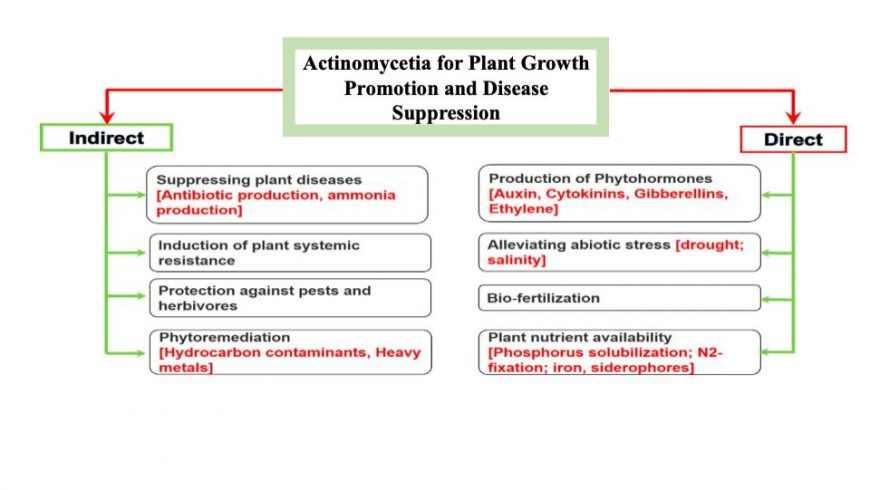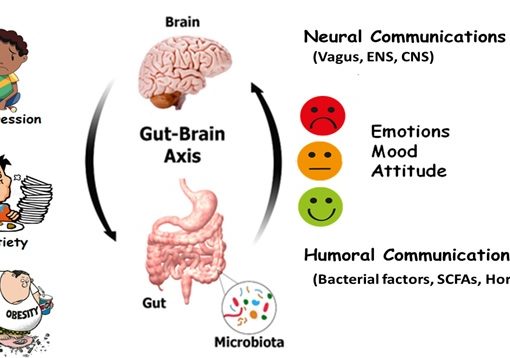Tea is one of the most widely consumed beverages in the world. Moreover, any factor that harms tea productivity directly impacts the economy, as tea plays a pivotal role in our country’s socio-economy. Northeastern state of Assam is the top tea-growing state in the country. However, pest infestations and fungal diseases significantly impact tea productivity, and farmers have no choice but to use various agrochemicals and pesticides. This hampers tea exports because different countries have set the maximum residue levels (MRLs) for pesticides in tea. The maximum concentration of a pesticide residue in food or feed of animal or plant origin is permissible when a plant protection product (PPP) is applied at the maximum residue level. Thus, due to high MRLs, tea exports are rejected, impacting the economy significantly. Using microbiological inputs, increase production may be achieved by combining sustainability and efficiency to combat these bottlenecks. Actinomycetia belongs to the newly named phylum Actinomycetota. They represent essential soil rhizobacteria communities and the endophytes dwelling in the internal tissues of the plant. They are an ideal choice for microbial formulations, especially for the biocontrol of tea phytopathogens, pests and plant diseases, and for maintaining sustainability by growth promotion.
Actinomycetia is a gram-positive class of bacteria representing one of the most diverse and extensive bacterial groups, being cosmopolitan microorganisms. Bacteria under the class Actinomycetia possess mycelial structures that can be adhered or aerial; the latter is responsible for asexual reproduction by spore formation. Recently, many studies have established actinomycetia as a source of bioactive metabolites against fungi, viruses, bacteria, pests and nematodes, as well as compounds with herbicide and pesticide-tolerant activities. Enzymes of industrial interest are also known to be produced by most Actinomycetia species, namely, chitinases, pectinases, amylases and cellulases, alongside enzymes promoting plant growth, like phosphatases and nitrogenases. Volatile organic compounds (VOCs) like hydrogen cyanide produced by actinomycetia also play a significant role in their antibiosis mechanisms.
Phytohormone Production
Indole compounds belonging to the class auxins are widely produced by actinomycetia, with the most common being indole-3-acetic acid (IAA). Thus, the production of IAA tends to promote root and shoot growth, increasing roots’ access to soil nutrients and their consecutive uptake. Many endophytic actinomycetia derived from tea are known to be prolific producers of this hormone. The synthesis of gibberellins is less common in actinomycetia, but four actinomycetia of four different genera, namely Streptomyces, Frankia, Micromonospora and Actinoplanes are well established. Many actinomycetia can produce ACC deaminase, an essential regulator of ethylene biosynthesis, contributing to plant growth control. In addition, this enzyme can delay senescence by promoting arboreal shoot and root elongation of host plants. Production of this hormone has many advantages in drought and salinity stress regions.
Nutrient Uptake and Accessibility
Several studies have attempted to identify diazotrophic actinomycetia capable of biological nitrogen fixation. However, a handful of species are known to show this capacity. Actinomycetia can also help N-fixing microbes and act as Rhizobia Helper Bacteria (RHB) to improve bioactivity. Moreover, many endophytes are known to be active nitrogen fixers. An essential element, Phosphorus (P), is crucial in a range of plant functions, and transfer of genetic characteristics over generations to cellular energy metabolism. However, plants cannot utilize the inorganic and organic forms of phosphorus available in nature. They can solubilize inorganic phosphates by producing citric acid, oxalic acid, acetic acid and other low molecular weight acids. Several species of actinomycetia can synthesize low molecular weight iron chelators that can chelate Fe3+ ions in the macro soil environment, termed siderophores. Siderophore-producing microorganisms have conferred competitive advantages in low-iron concentration environments. The ability and feature to capture Fe3+ ions prioritize the survival of these species over others, including phytopathogenic microorganisms, as iron tends to be unavailable.
Actinomycetia as biocontrol agents
The mode of biocontrol among actinomycetes, defined as antibiosis, is applicable where toxic metabolites produced by an antagonistic presence hinder a pathogen’s growth. Lytic enzymes are essential for antibiosis biocontrol mechanisms, viz., chitinase, pectinase, cellulase, and xylanase. Fungal diseases like Fusarium dieback, root rot, and blister blight significantly affect tea plantations. Actinomycetia can combat the causal pathogens by producing fungal growth inhibitory compounds and destroying cell membranes, such as phenols, hydrocarbons, pyrrolizidine, acids, and esters. Actinomycetia often exhibits superior in vivo performance against fungal phytopathogens, demonstrating application as constituents of biopesticides for plant defence and inhibitory effects. Due to their impressive metabolite synthesis with insecticidal properties, actinomycetia are also potential candidates for pest biocontrol. The prominent family of natural insecticides actinomycetia produce are polyketide compounds, including tetramycins, spinosyns, avermectins and polynactins.
Future Prospects
A limited number of formulations in the market do not justify the bioactive diversity potential of actinomycetia. Developing microbial inoculants that can exploit this otherwise wasted potential is necessary for the tea industry. As discussed earlier, actinomycetia possesses a superior ability to produce antibiotics and lytic enzymes of industrial importance. Chitinolytic species are crucial for survival against insect pests and fungal pathogens. The volatile organic compounds, hydrogen cyanide, fatty acids, ammonia, hydrogen sulphide, phenolic and alcohol compounds of actinomycetia exhibit high nematicidal activity. Therefore, actinomycetia-based inoculants have broad applications. However, biofertilizers and most biopesticides have certain limitations as they are living products. Therefore, their success depends on the host environment and its components. Delving deeper into the interaction between the actinomycete and the surrounding microbiome and its relation with the different tea cultivars will increase production efficiency. Submerged fermentation and solid-state fermentation can be used to optimize bioprocesses associated with the industrial production of actinomycetia spores. The biological treasure of actinomycetia associated with the tea ecosystem is still less exploited. Developing sustainable products that make agriculture more productive, and provide better plant nutrition and protection through microbial inoculants and biopesticides is possible. It will benefit the tea industry and small-scale tea growers alike.
References:
Dutta, J. and Thakur, D. (2020). Evaluation of antagonistic and plant growth promoting potential of Streptomyces sp. TT3 isolated from tea (Camellia sinensis) rhizosphere soil. Curr. Microbiol. 77: 1829–1838. https://doi.org/10.1007/s00284-020-02002-6.
Shan, W.; Zhou, Y.; Liu, H. and Yu, X. (2018). Endophytic actinomycetes from tea plants (Camellia sinensis): Isolation, abundance, antimicrobial, and plant-growth-promoting activities. Biomed. Res. Int.. https://doi.org/10.1155/2018/1470305
Borah, A. and Thakur, D. (2020). Phylogenetic and functional characterization of culturable endophytic actinobacteria associated with Camellia spp. for growth promotion in commercial tea cultivars. Front. Microbiol. 11. https://doi.org/10.3389/fmicb.2020.00318.
Hazarika, S.N.; Saikia, K. and Thakur, D. (2022). Characterization and selection of endophytic actinobacteria for growth and disease management of tea (Camellia sinensis L.). Front. Plant Sci. 13. https://doi.org/10.3389/fpls.2022.989794
Author Information:
- Name of the Author: Pranami Bharadwaj
- Designation of Author: DST INSPIRE Fellow
- E-mail ID of Author: pranami.bharadwaj@gmail.com
- Name and address of the Institute to which the Author are associated: Microbial Biotechnology Lab, Institute of Advanced Study in Science and Technology, Guwahati




